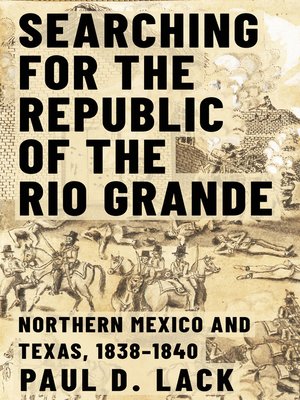Searching for the Republic of the Rio Grande
ebook ∣ Northern Mexico and Texas, 1838–1840
By Paul D. Lack

Sign up to save your library
With an OverDrive account, you can save your favorite libraries for at-a-glance information about availability. Find out more about OverDrive accounts.
Find this title in Libby, the library reading app by OverDrive.



Search for a digital library with this title
Title found at these libraries:
| Loading... |
This regional effort to establish an independent republic achieved some fleeting victories, although they were flanked by triumphs of the Supreme Government. Initially fed by a desire to defend the federalist system against a consolidated and unsupportive central government, zealous leaders such as Antonio Zavala and Antonio Canales led the popular uprising.
As the skirmishes continued, these norteamericanos resorted to increasingly desperate measures, including soliciting aid from the newfound Republic of Texas, which supplied covert support for the rebel cause in the form of manpower, funding, and supplies. When the chastened Anglo Texans finally fled back to their homeland with the tacit compliance of the government of the Republic of Mexico, the states of Coahuila, Nuevo León, and Tamaulipas became entirely free of the norteamericanos, who faced almost unanimous hatred in Mexico by the time of their departure. Leaders from both Mexican factions in the civil conflict then sought peace and partnership against the threatened aggrandizement of the Republic of Texas.
In that regard, this inconclusive regional revolt had many precursive elements to the aggression of the United States that resulted in war against Mexico from 1845 to 1848, fulfilling the imperial dreams previously uttered by Anglo Texans during this federalist revolt of 1838–1840. Searching for the Republic of the Rio Grande reads the smoke that would soon fan into the flames of open war against the Mexican Republic.






